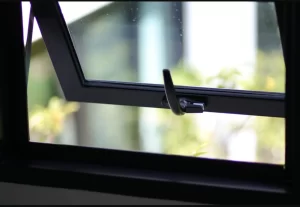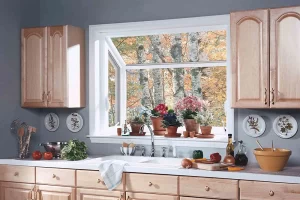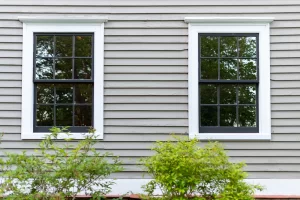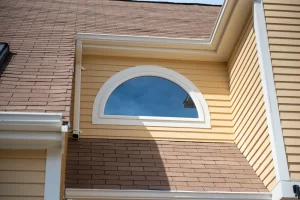
Let's See How Much We Can Help You Save On Window Upgrades
How This Works
Share some details about your home project.
Show More Info
Understanding Window Replacement
What are the Benefits of Getting New Windows?
- Improved Energy Efficiency: New windows are designed with advanced technology to minimize heat loss and air leakage, resulting in lower energy bills. Energy-efficient windows can also enhance indoor comfort by maintaining consistent temperatures.
- Enhanced Curb Appeal: Upgrading to new windows can dramatically improve the appearance of your home. Choose from a variety of styles and finishes to complement your architectural design and boost curb appeal.
- Increased Home Value: New windows are a valuable investment that can increase the resale value of your home. Potential buyers are often attracted to properties with modern, energy-efficient features.
- Better Security and Safety: Modern windows come with enhanced security features, such as multi-point locking systems and impact-resistant glass, providing better protection against intruders and severe weather.
- Noise Reduction: High-quality windows can significantly reduce outside noise, creating a quieter and more peaceful indoor environment. Enjoy a tranquil home atmosphere with new, sound-insulating windows.
How Much Does a Window Replacement Cost?
Are you considering window replacement and wondering about the costs involved? Window replacement costs vary depending on several factors, including window type, installation company, materials, and more. In this guide, we’ll break down typical costs for different window types to help you plan your budget effectively.
Average Window Replacement Cost Overview:
Window replacements typically range from $467 to $1,333 per window, encompassing both materials and labor for a standard double-hung window. However, several variables can influence these costs, making it essential to understand the specifics for different window types.
Breakdown of Window Types and Costs:
- Bay and Bow Windows ($2,000-$6,000): Bay and bow windows feature large glass panes set in an angled or curved frame extending from your home, providing aesthetic appeal and interior space. Due to their size and complexity, they are typically more expensive.

- Casement Windows ($527-$1,200): Casement windows open using a hand crank on a left-to-right axis, resembling a door. They offer good ventilation and are moderately priced.

- Garden Windows ($1,320-$5,300): Garden windows, also known as greenhouse windows, are box-shaped with a shelf for plants or herbs. They add charm to your home but can be among the more expensive options due to their design.

- Double-Hung Windows ($467-$1,333): Double-hung windows are versatile, opening from both the top and bottom for maximum airflow. They are popular and relatively affordable compared to other styles.

- Shaped Windows ($840-$1,200): Shaped windows, such as circle or uniquely designed windows, are priced higher due to the labor and materials required for their custom shapes. They add a distinctive touch to your home’s aesthetics.

In a Nutshell:
Understanding the costs associated with different window types is crucial for planning a window replacement project. Factors such as window style, size, and material quality can significantly impact the overall cost. By exploring the range of prices for various window types outlined in this guide, you can make informed decisions and budget effectively for your home improvement needs.
How to Measure Windows for Replacement?
Replacing windows involves accurate measurements to ensure a perfect fit for your new windows. Understanding the parts of a window frame and how to measure them correctly is crucial. Follow these steps to measure your windows accurately and efficiently.
Understanding Window Frame Parts:
- Head: The horizontal top component where the upper window sash rests.
- Jambs: Vertical frame elements on either side of the window.
- Sill: The bottom horizontal component where the lower window sash rests.
Steps to Measure Windows for Replacement:
- Step 1: Measure the Width – Measure the width at three points: top, middle, and bottom between the jambs. Use the smallest measurement to order the window.
- Step 2: Measure the Height – Measure from the high point of the sill to the top of the window opening at three points: left, center, and right. Use the smallest measurement for ordering.
- Step 3: Measure the Depth – Measure the frame depth from the inside face of the interior stop to the inside face of the exterior stop. Ensure a depth of at least 3-1/4 inches to accommodate the replacement window.
- Step 4: Check for Squareness – Measure diagonally from top corners to opposite bottom corners. Compare the measurements; they can differ by up to 1/4 inch. Adjust width measurement if needed based on squareness.
Expert Tips for Window Replacement:
- Precision Matters: Accurate measurements are essential for a perfect fit.
- Record Measurements: Keep detailed records of your measurements for reference.
- Inspect Window Frames: Ensure frames are in good condition before replacement.
- Consider Energy Efficiency: Opt for energy-efficient windows to save on bills and increase home value.
In a Nutshell:
Measuring windows correctly is the first step towards a successful replacement project. By understanding window frame components and following these steps diligently, you can confidently order replacement windows that fit seamlessly, enhancing both aesthetics and energy efficiency of your home.
Are Energy-Efficient Windows Worth It?
Introduction: Are you considering upgrading to energy-efficient windows but unsure if it’s worth the investment? Discover how Energy Star certified windows can lead to significant savings on your energy bills and potentially qualify you for valuable tax credits.
Benefits of Energy-Efficient Windows:
Upgrading to newer, well-designed windows can reduce energy consumption and save you money. Energy Star certified windows, endorsed by the Environmental Protection Agency (EPA), are particularly effective at cutting energy costs. On average, homeowners can expect to save 12 to 13 percent on their energy bills with these windows.
Factors Affecting Savings:
- Location: In the EPA’s Northern Zone (northern half of the U.S.), replacing 10 inefficient single-pane windows with Energy Star models can save around $366 annually (a 22% reduction). For double-pane windows, savings are approximately $134 yearly (a 9% reduction).
- Energy Costs: Savings vary based on local energy costs. For instance, in Connecticut (average energy bill of $1,875), annual savings could reach about $225, while in Colorado (average bill of $1,104), savings might be around $132.
Enhanced Savings with Most Efficient Windows:
Consider installing windows from Energy Star’s ” Most Efficient” list for even greater savings. Additionally, take advantage of federal tax credits available until 2032, thanks to the Inflation Reduction Act of 2022. This credit allows for a 30% deduction (up to $600 annually) on qualifying expenditures.
Strategy for Maximizing Tax Credits:
To optimize your tax benefit, stagger your window replacements over multiple years. Each installation can qualify for the federal tax credit, providing substantial savings on your overall window upgrade costs.
In a Nutshell:
Investing in energy-efficient windows not only reduces energy bills but also contributes to environmental conservation. With potential savings ranging from 9% to 22%, depending on your region and window type, the long-term benefits are compelling. Explore Energy Star certified options and capitalize on available tax credits to make your home more efficient and sustainable.
Are There Really Free Windows? Can I Find Government Assistance to Help Offset Costs?
It is rare that a person will gain enough grants, subsidies, and assistance to fully cover their costs in purchasing new windows. That said, there are many possible resources available to offset costs, and they vary greatly by location and circumstance. See some of our linked topics below to learn more about ways to help defray your expenses:
What Should You Consider When Shopping for Windows?
When shopping for new windows, understanding key factors like replacement options, energy efficiency ratings, installation, and warranties is essential. This guide will help you navigate the window market effectively.
- Evaluate Replacement Needs: Decide whether you need a full replacement or just specific components:
- Sash Pack vs. Pocket Replacement: If window jambs are in good condition, consider replacing only the sash pack (upper and lower sashes). For a more comprehensive upgrade, opt for pocket replacement, which includes the sashes and frame. New-construction windows are ideal for deteriorated frames but are more costly.
- Check Energy Performance Labels: Look for the National Fenestration Rating Council (NFRC) label on windows:
- U-Factor and Solar Heat Gain Coefficient (SHGC): Lower numbers indicate better energy efficiency. Compare these ratings among different window options to make an informed choice.
- Seek Energy Star Certification: The Energy Star label indicates compliance with energy efficiency standards:
- Updated Criteria: Ensure the window meets the latest U-factor and SHGC requirements based on your region.
- Find a Reliable Installer: Proper installation is crucial for window performance:
- Certified Installers: Choose installers trained and certified by window manufacturers.
- Contractor Selection: Opt for installers who provide detailed bids and understand specific challenges like lead paint in older homes.
- Consider Window Lead Times: Custom or specialized windows may have longer lead times:
- Order Timeline: Factor in potential delays for custom or unique window designs.
- Quick Options: Standard stock windows are typically available sooner.
- Review Warranty Terms: Understand both window and installation warranties:
- Warranty Details: Check for coverage duration and exclusions, especially for glass and mechanism repairs.
In a Nutshell: By considering these factors-replacement needs, energy ratings, installation quality, lead times, and warranty coverage-you can confidently choose the right windows for your home. Explore reputable brands and certified installers to ensure a successful window replacement project
© 2025 All Rights Reserved. leadiamo.com
This site is a free service to assist homeowners in connecting with local service contractors. We will connect you with businesses who may provide additional product details and/or assist you with quotes. All contractors are independent and this site does not warrant or guarantee any work performed. It is the responsibility of the homeowner to verify that the hired contractor furnishes the necessary license and insurance required for the work being performed. All persons depicted in a photo or video in any advertisement associated with this site are actors or models and not contractors affiliated with this site.
Any service marks, logos, and trademarks (collectively the “Trademarks”) displayed are registered and/or unregistered Trademarks of their respective owners. This site contains affiliate and partner links and may receive compensation for referrals or purchases made through our links. Subject matter within this website are copyrighted property of the owner of this site. This website and its owner is not responsible for any photographic or typographical errors.